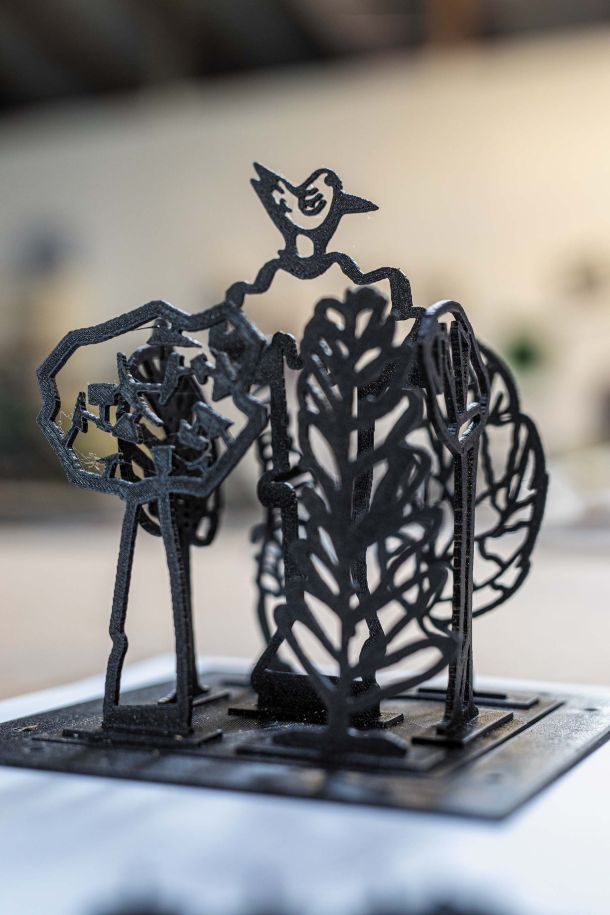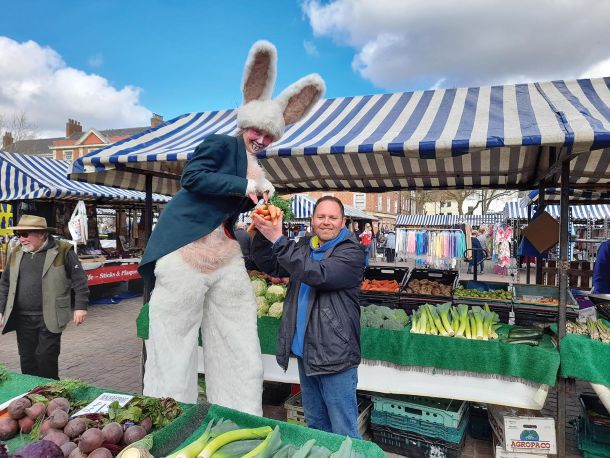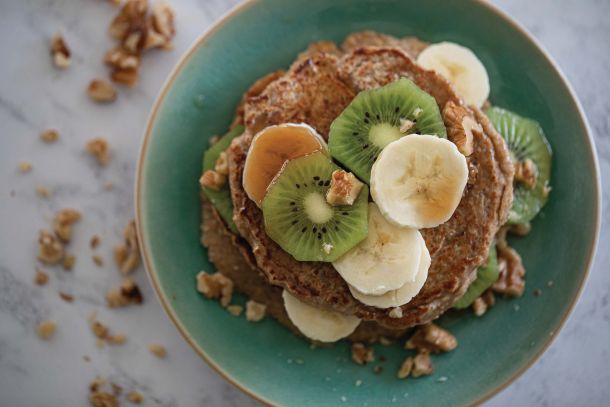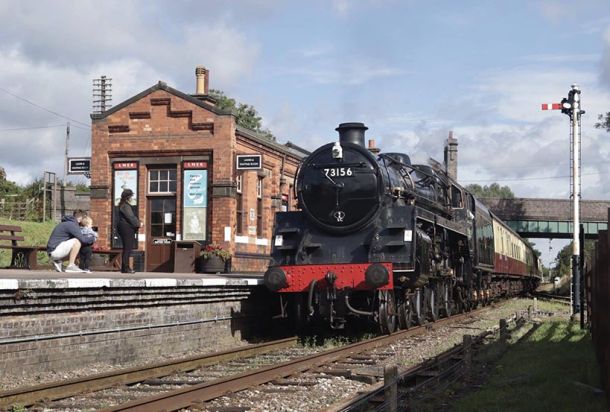Girl About Nottingham...
Location Location
Hockley and the Lace Market are the oldest areas in the city of Nottingham. Making up part of the Creative Quarter, these districts each have their own unique character, and today the area merges history with independent culture, revealing the spirit of modern Nottingham. They are easy to find in the heart of the city, close to the shopping districts and served by tram and bus links.
Explore
Walking is certainly the best way to discover the area. There are a number of organised walking tours available which are well worth taking up.
Look out for the breathtaking St. Mary’s Church, which is the oldest religious foundation in the city and located on High Pavement alongside the County War Memorial.
Nottingham Contemporary has modern art covered and The Broadway offers films and shows all year round.
Keep an eye out for the Grade II listed Adams Building on Stoney street, formerly a lace showroom and thought to be the finest surviving example of a Victorian lace warehouse in the UK.
At nearly 165 years old, the Birkin building was once a place where lace was exported around the world.
See if you can spot the Lace Market Trees behind the Adams building, contemporary metal trees that were inspired by lace designs.
The Watson Fothergill office on George Street has a distinct gothic look and stands out against the newer buildings on its street.
It’s certainly worth visiting the Galleries of Justice, with its courtrooms dating back to the 14th century. It is now a museum and a popular tourist attraction, and even displays Oscar Wilde’s cell door!
Bag a Property
The city represents excellent value for money if you know where to look. The average smaller property can range from anything between £130,000-£170,000 however an average apartment price in the Lace Market area is higher at £186,000 and there’s an interesting range of apartments and modern buildings available alongside pricier Grade listed properties on the market. The area is certainly a popular residential location but does come in higher priced than other areas of the city.
Cafe & Cocktails
There is undoubtedly a chilled, understated cool vibe by day yet with a heartbeat that screams life, and a vibrant rhythm at night as it transforms into a place you want to live and breathe. The balance between day and night venues is spot on, and that’s before we even get started on the choice!
There are far too many independent coffee houses and tearooms to mention so apologies to anyone we have missed – we can only urge you to visit for yourself.
I was impressed with Yolk café on Goose Gate. It’s also next door to 31K which is owned by the same people and is the place to go for Meatballs and Cocktails. Yes, you read that correctly – an unusual combination that somehow is pretty magical.
The Hockley Kitchen is a great choice, The Bean Espresso Bar on Stoney Street also worth a mention, and I loved Coco Tang which is a Vietnamese eatery that offers traditional Vietnamese coffee and cake, which is absolutely delicious.
Nottingham Contemporary has a great café sadly often overlooked by the art collection and the café bar at Broadway cinema has an outdoor area perfect for watching the world go by. Oh, and I really liked The Ugly Bread Bakery, which is a great coffee house and serving artisan breads, and Magic Garden – a hidden delight on Low Pavement is well… magical!
The Lacehouse on Broadway is a stunning venue with a hip atmosphere and wonderful cocktails. All Bar One is another popular stop on Weekday Cross – the earlier you get there the better, and of course Revolution is always buzzing by night!
The Hockley Arts Club really does bring the heart and soul of the area alive and is sophisticated and sleek with a fun twist. Great cocktail range and lovely staff. Cottonmouth on Goosegate is another sophisticated stop with a modern approach. A drink date wouldn’t be complete either without visiting the Curious Tavern on George Street; Nottingham’s oldest hotel tavern.
Retail Therapy
A perfect respite from the city and its more familiar brand names, the Lace Market offers so many diverse independent retailers. It is also home to the Paul Smith boutique, the first to be opened by the designer in the country.
Walking around the cinematic streets you will stumble for sure on a hidden gem or two.
It is joined by Hockley in offering quirky businesses and eclectic offerings. Vintage clothing emporiums, second-hand bookshops (check out Bookwise whose collection of books is seriously impressive), stylish hair salons, bijoux boutiques and tattoo studios. Some are in plain sight, others secluded down alleyways.
Behind the Red Door on Weekday Cross is a rather wonderful gift shop to look out for. The Nottingham Lace Centre on Victoria Market offers a range of lace, Cow vintage clothing has some really special pieces, Ice Nine jewellers on Goose Gate offers some unusual items for gifts, including circus toys, bohemian knickknacks and silver body jewellery. For men, Mimm is the home of original printed tees and hoodies, and those with a penchant for darker fashion will love Void Clothing.
And as you walk into Low Pavement you will find a pop-up florist has opened up in the two red telephone boxes selling gorgeous blooms at just £5.00 a bunch. I defy you not to fall in love with the little place!
Sunday Roast
From traditional meats to plant-loving goodies, there’s certainly no shortage of choice in the area with its bustling pubs and restaurants. If anything, I was very much stuck for choice and countless visits have needed to be made! Head to The Cross Keys on Byard Lane for a super portion, The Cock & Hoop and Pitcher & Piano – both on High Pavement – are excellent choices. Farradays Pub on Pelham Street has a cosy atmosphere for lunch and The Hockley Arts Club on Carlton is not only an incredible night venue but really does pack a punch with its food. Vegans will love its veggie nut roast.
Debbie Bryan is the owner and creative genius behind the multi-award-winning gallery, design studio, creative space and tea room at the Debbie Bryan Art Café on St. Mary’s Gate. She is also a trustee of the Framework Knitters Museum in Ruddington.
Debbie is a self-confessed knowledge bank on lace and the area’s lace heritage and has one of the largest collections of original lace design drawings in the country, some of which are on display in the Art Café, and many of which form the inspiration for the various multi-dimensional arts and crafts and gifts she creates.
The Art Café offers a chilled-out, nurturing space for relaxation and socialising over a coffee, or perhaps browsing the gorgeous handmade gifts in the shop, including its own lace inspired beer! It’s a popular place for residents and workers in the area to call in and attracts visitors from far and wide. Debbie has invested in curious and colourful, eclectic and highly original styling to create a brilliant creative hub for people wanting to learn new crafts using lace, understand more about lace heritage, and fuse this with forward-thinking new crafts. It is also increasingly booked by couples and groups who are going mad for her crafternoon teas. www.debbiebryan.co.uk
Best thing about living and working in the Lace Market?
Working here is by far the overriding heritage of the place that has been really cleverly integrated into a forward-thinking, progressive creative hub that encourages and supports creative businesses such as mine but also has successfully brought other business into the area. We have a great relationship with Nottingham College, here on the doorstep, and have had apprentices from there, and local staff from many businesses all come into the café.
There’s a convivial atmosphere to business that means that although we are not working collaboratively on projects, we are thriving alongside one another and supporting in local initiatives. There is always something new around the corner and we welcome new business, but we have also been able to sustain the area with existing trade and people are gradually getting busier following the lockdowns. We are very lucky in our location that we are on the route between Broadway Cinema and Nottingham Contemporary, so we have plenty of trade.
There’s also a sense of something rather special in the area – we have collectively carved out a very unique space in the city that has people and industry at its heart.
We also have the Whatson Fothergill Walks that give people a tour of the Lace Market and these regularly bring people into the area and business to traders.
Social Scene?
As lively or as relaxed as you want it to be. A place to wander alone or to meet others. Bursting with life, atmosphere, and genuinely nice people. It’s fun, relaxed and feels very welcoming. It has a unique charm that is hard to describe until you experience it for yourself.
Describe the Lace Market’s USP
If you want to escape the hustle and bustle of the city and immerse yourself in almost a village-like atmosphere, then this is the place for it. There’s a sleepiness and chilled feel by day that still has a tinge of excitement as you wander around the streets and discover such an eclectic range of retailers and venues all nestling alongside one another. Each with arresting individual personalities, a somewhat Bohemian feel, and so many cool and unusual products and diverse cultures or environments to experience.
By night, it is lively, bustling with voices and personalities and a convivial nature. It’s really quite unique.
Past in the Present
The Lace Market is known to be the oldest area of Nottingham, and has a history stretching from the troglodyte settlers, who hollowed out cave dwellings in the rock of the sandstone cliff to the thriving commercial, residential and leisure area it has become today. There is evidence of the earliest rural settlement in the area around Belward Street and Bellar Gate, now the current site of Motorpoint Arena, dating from fifth and sixth centuries.
Nottingham actually developed around this settlement during Anglo-Saxon times, when it became known as Snotengaham.
Following William the Conqueror’s invasion in 1066 a new Norman borough started to develop around the Castle Rock on the western side of the town. A new market place was established in between the two settlements, while there was also a daily market held in the Saxon town at Weekday Cross – this is now marked by the cross on Fletcher Gate opposite Nottingham Contemporary.
Its advantageous position near the River Trent, which formed what the Romans had thought of as the dividing line between the north and south of Britain, made the town of Nottingham an important and preferred site in medieval England. The building on the Castle Rock was a favourite of King Richard III and was where he stayed prior to the Battle of Bosworth where he was to lose his crown and his life.
As Nottingham grew in stature, its street patterns developed, and despite the fact that the earlier buildings sadly no longer survive, the street patterns remain very similar to what they were in the Middle Ages:
Nottingham continued to prosper during the Tudor period and its prosperity can still be judged by the elegance and splendour of some of its properties.
During the seventeenth and eighteenth centuries, the trade and industry side of the town prospered, and it soon became a centre for the hosiery industry during the eighteenth century, with workers making the stockings on frames in their houses and selling their products to merchants.
However, the invention of mechanised frames, together with the introduction of men’s trousers as the fashion in place of the stocking hose worn with knee breeches spelt the death knell for much the hosiery trade, and many workers were turning their hands to the making of lace.
A significant hindrance though was seen in the narrow confines of the town which meant that there was very little room to build factories for the developing lace and related industries, so business people were forced to set up their works in the surrounding districts. Nineteenth century mills can still be seen in the town and suburbs around Nottingham, many of them now converted to residential or small industry and business use. This heritage gives such an unusual and diverse skyline to the city.
Interestingly, it was never considered a market place, but a more so a market as it dealt with the wholesaling and promotion of the products from the lace industry. Often, women and girls would work in shops above showrooms sewing finishings on products from the outside factories. The pieces would be displayed inside the showrooms for buyers from across the world of fashion and domestic furnishing
The lace merchants became very prosperous and began to build warehouses and showrooms which they felt matched this prosperity. In the process they sadly demolished some of the fine older buildings, to replace them with imposing multi-storey stone-trimmed brick mansions of trade. The most imposing of these was that designed by one of Nottingham’s leading architects, T.C. Hine for Thomas Adams and James Pages. Opened in 1855 the warehouse contained a number of features not previously seen in the town, including facilities for the workers such as a library, schoolroom, tearoom and a chapel. The chapel windows can still be seen in the right-hand basement of the Stoney Street frontage.
But, as with so many fashions, the interest in lace fell significantly and as the twentieth century progressed the buildings of the Lace Market sadly fell into disuse and their fabric deteriorated.
Fortunately, a group of business people saw the possibilities of a restored Lace Market, not with the intention of marketing lace, but to provide attractive city centre accommodation for business men and women initially, and in recent times students. This in turn led to the development of diverse clubs, restaurants and other facilities to bring new life to the area.
The Birkin Building
The Birkin Building sits resplendent as the ‘Star of Broadway’ in the heart of The Lace Market and has played host to a range of fashion icons. Not only were Norman Hartnell and Hardy Amies regular visitors to Birkin & Co.’s headquarters when they were dressmakers to the Queen, but Jane Birkin – of the Hermès Birkin Bag fame – frequently visited the building as a child. Jane is the great, great, great granddaughter of Birkin & Co’s founder and can be pictured here at The Birkin Building, meeting the Queen during her royal visit in 1955.
For the last 40 years The Birkin Building had been owned by Spenbeck. Run by sisters Becky and Victoria it been redeveloped to house bespoke, sustainable offices. For further info visit: www.spenbeck.co.uk
























